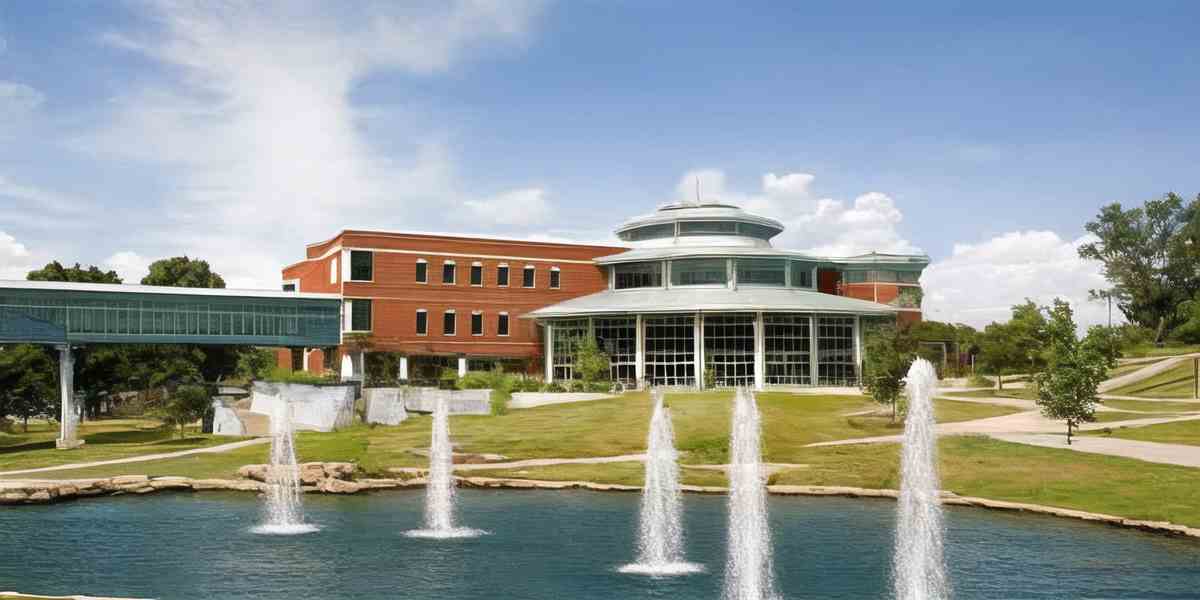University of Missouri-St Louis
2024 USNews Best Colleges Ranking: 260(↓48) (Click for schools/majors ranking)
School Characteristics: Private (4-Years)
Calendar systerm: Semester
Religious Affiliation: Not applicable
School Chief: Dr. Kristin Sobolik (Chancellor)
Website: https://www.umsl.edu/; Phone: 3145165000
Location: One University Boulevard, Saint Louis, MO, 63121-4400

University of Missouri-St Louis Important Facts
University of Missouri-St Louis Degrees and Majors
University of Missouri-St Louis Ranking and Admission
University of Missouri-St Louis Admission Score Requires
*Numbers at left represent SAT/ACT submitting percentage, numbers on blue blocks represent 25%-75% admission scores
**Drag green block to check data for different years, click blue block to check scores trends
University of Missouri-St Louis Students Diversity
University of Missouri-St Louis Students Age Distribution
University of Missouri-St Louis International Students Trends
University of Missouri-St Louis Campus and Safety
Nearby Top Colleges
Campus Safety
Reference
- University of Missouri-St Louis Official Website
- USNews Best Colleges Ranking
- USNews Bset Global Universities Ranking
- THE World University Ranking
- QS World University Ranking
- ARWU World University Ranking
- US Department of Education College Scorecard
- National Center for Education Statistics
- Forward Pathway US College Ranking Database
 University of Missouri-St Louis Important Facts Trends
University of Missouri-St Louis Important Facts Trends
 University of Missouri-St Louis degrees/majors
University of Missouri-St Louis degrees/majors
University of Missouri-St Louis major details
*Depends on whether majors have graduates in 2022 or not, Yes / No
**Move mouse on can check deitaled graudates number, click for major detailed information
***Due to privacy policy, graduate salaries are not shown for some majors that has few gradautes
| Major | Graduate Salary | Under | Master | Doctor |
|---|---|---|---|---|
| Business/Commerce, General. | $54,470-$106,536 | |||
| Business Administration and Management, General. | $55,673 | |||
| Accounting. | $65,154-$76,951 | |||
| Management Science. | - |
| Major | Graduate Salary | Under | Master | Doctor |
|---|---|---|---|---|
| Education, General. | $28,577-$77,941 | |||
| Educational Leadership and Administration, General. | $54,987 | |||
| Special Education and Teaching, General. | $53,607 | |||
| Counselor Education/School Counseling and Guidance Services. | $46,171 | |||
| Elementary Education and Teaching. | $36,475-$49,774 | |||
| Secondary Education and Teaching. | $36,475-$49,774 | |||
| Early Childhood Education and Teaching. | $36,475-$49,774 | |||
| Physical Education Teaching and Coaching. | - |
| Major | Graduate Salary | Under | Master | Doctor |
|---|---|---|---|---|
| Optometry. | $115,402 | |||
| Registered Nursing/Registered Nurse. | $64,611-$103,700 | |||
| Nursing Science. | $64,611-$103,700 | |||
| Nursing Practice. | $64,611-$103,700 |
| Major | Graduate Salary | Under | Master | Doctor |
|---|---|---|---|---|
| Information Technology. | - | |||
| Computer Programming, Specific Applications. | - | |||
| Computer Science. | $82,631 | |||
| Computer and Information Systems Security/Auditing/Information Assurance. | - |
| Major | Graduate Salary | Under | Master | Doctor |
|---|---|---|---|---|
| Social Sciences, General. | - | |||
| Anthropology, General. | $35,436 | |||
| Criminology. | $45,065 | |||
| Economics, General. | $64,281 | |||
| Econometrics and Quantitative Economics. | $64,281 | |||
| International Relations and Affairs. | - | |||
| Political Science and Government, General. | $42,504 | |||
| Sociology, General. | $41,287 |
| Major | Graduate Salary | Under | Master | Doctor |
|---|---|---|---|---|
| Public Administration. | $64,474 | |||
| Social Work. | $37,224-$51,725 |
| Major | Graduate Salary | Under | Master | Doctor |
|---|---|---|---|---|
| Psychology, General. | $39,445 | |||
| Educational Psychology. | $50,604 |
| Major | Graduate Salary | Under | Master | Doctor |
|---|---|---|---|---|
| Biology/Biological Sciences, General. | $49,071 | |||
| Biochemistry. | $52,427 |
| Major | Graduate Salary | Under | Master | Doctor |
|---|---|---|---|---|
| Civil Engineering, General. | $74,276 | |||
| Electrical and Electronics Engineering. | $88,063 | |||
| Mechanical Engineering. | $77,327 |
| Major | Graduate Salary | Under | Master | Doctor |
|---|---|---|---|---|
| Communication, General. | $40,447 | |||
| Speech Communication and Rhetoric. | $40,447 | |||
| Mass Communication/Media Studies. | $40,447 |
| Major | Graduate Salary | Under | Master | Doctor |
|---|---|---|---|---|
| Liberal Arts and Sciences/Liberal Studies. | $40,966 | |||
| General Studies. | $40,966 |
| Major | Graduate Salary | Under | Master | Doctor |
|---|---|---|---|---|
| Fine/Studio Arts, General. | $41,077 | |||
| Art History, Criticism and Conservation. | $41,077 | |||
| Music, General. | - |
| Major | Graduate Salary | Under | Master | Doctor |
|---|---|---|---|---|
| Chemistry, General. | $52,908 | |||
| Physics, General. | - |
| Major | Graduate Salary | Under | Master | Doctor |
|---|---|---|---|---|
| English Language and Literature, General. | $40,196-$51,445 | |||
| Creative Writing. | - |
| Major | Graduate Salary | Under | Master | Doctor |
|---|---|---|---|---|
| History, General. | $37,895 |
| Major | Graduate Salary | Under | Master | Doctor |
|---|---|---|---|---|
| Philosophy. | - |
| Major | Graduate Salary | Under | Master | Doctor |
|---|---|---|---|---|
| Mathematics, General. | $55,947 | |||
| Applied Mathematics, General. | - |
| Major | Graduate Salary | Under | Master | Doctor |
|---|---|---|---|---|
| Foreign Languages and Literatures, General. | $33,264 |
| Major | Graduate Salary | Under | Master | Doctor |
|---|---|---|---|---|
| Sport and Fitness Administration/Management. | - |
| Major | Graduate Salary | Under | Master | Doctor |
|---|---|---|---|---|
| Gerontology. | - |
 University of Missouri-St Louis Schools/Majors Ranking
University of Missouri-St Louis Schools/Majors Ranking
Under Ranking (2024)
World University Ranking
*Rankings have been updated to 2025USNews schools/majors ranking, rankings are for reference only
*numbers in bracket represent rankings change compare to last version
 University of Missouri-St Louis Varsity Athletes
University of Missouri-St Louis Varsity Athletes
| NCAA Division II without football | MEN | WOMEN |
|---|---|---|
| Track and Field and Cross Country (combined) | 36 | 21 |
| Soccer | 26 | 30 |
| Swimming | 24 | 22 |
| Baseball | 38 | - |
| Basketball | 14 | 12 |
| Golf | 11 | 9 |
| Softball | - | 19 |
| Volleyball | - | 16 |
| Tennis | 6 | 6 |
| NCAA Division II without football | MEN | WOMEN |
|---|---|---|
| Soccer | 25 | 23 |
| Swimming | 19 | 20 |
| Baseball | 35 | - |
| All Track Combined | 18 | 12 |
| Basketball | 14 | 13 |
| Golf | 11 | 8 |
| Softball | - | 18 |
| Volleyball | - | 17 |
| Tennis | 8 | 8 |
| NCAA Division II without football | MEN | WOMEN |
|---|---|---|
| Soccer | 25 | 24 |
| Swimming | 20 | 19 |
| Baseball | 37 | - |
| Basketball | 15 | 13 |
| Softball | - | 19 |
| Volleyball | - | 18 |
| Golf | 10 | 7 |
| Tennis | 7 | 7 |
| All Track Combined | - | - |
| Swimming and Diving | - | - |

 University of Missouri-St Louis Important Facts Trends
University of Missouri-St Louis Important Facts Trends
















































































































































































































































































































































































































































